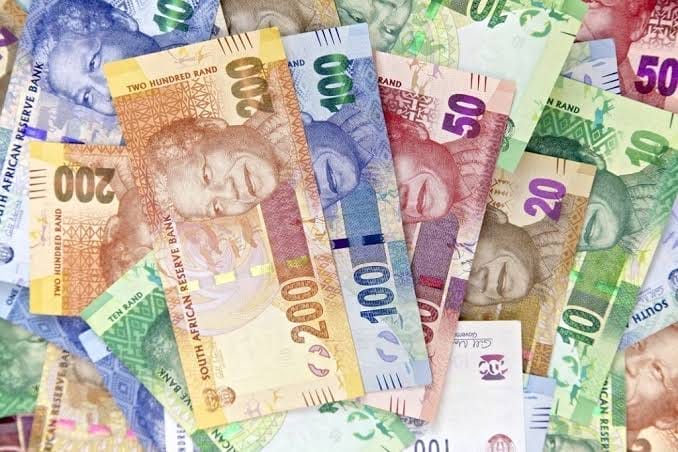The South African rand extended its losses on Monday, sliding to R17.97 against the U.S. dollar, as investor sentiment remained cautious ahead of the Reserve Bank’s interest rate announcement and the looming implementation of U.S. tariffs on South African exports. The currency depreciated by approximately 0.6 percent, reflecting increased macroeconomic uncertainty and external trade risk, according to a report published by Reuters.
ALSO READ: South Africa Suffers $3.7 Billion Equity Outflow as Foreign Investors Retreat
Analysts anticipate that the South African Reserve Bank may opt for a 25-basis-point interest rate cut during its monetary policy committee meeting scheduled for July 31. This expectation follows indications of cooling domestic demand, with money supply (M3) growth recorded at 7.27 percent and private sector credit expansion at 4.98 percent in June. These figures suggest a softening credit environment, as noted by Reuters in its analysis of economic indicators released ahead of the rate meeting.
In addition to monetary policy concerns, market attention has shifted to escalating trade tensions between South Africa and the United States. The Biden administration is reportedly preparing to impose up to 30 percent tariffs on select South African exports beginning August 1, unless ongoing negotiations yield a breakthrough. According to South African government sources cited by MarketScreener on July 28, the tariffs stem from disagreements over the country’s domestic race-based policies and trade frameworks, which U.S. officials argue distort competitiveness.
South African officials have expressed concern that their negotiating position may be weakened by urgent timelines and geopolitical pressure. According to Reuters, some analysts warn that South Africa may be compelled to accept unfavorable bilateral trade terms in order to avert broader economic fallout.
ALSO READ: Starlink Plans $113 Million Investment to Expand Satellite Internet in South Africa
Investor caution is also visible in the bond market, where yields on the benchmark 2035 government bond rose slightly to 9.825 percent. The movement suggests waning demand for sovereign debt instruments amid persistent policy and trade-related uncertainties, according to bond market data reviewed by Reuters.
Key export sectors, including agriculture, mining, and automotive manufacturing, face elevated risk should the U.S. tariffs proceed without adjustment or exemptions. In response, the Minister of Mineral Resources and Energy stated that South Africa is actively exploring alternative export destinations, particularly in Asia and the Middle East, as reported by OE Digital.
The currency’s volatility is likely to persist through early August. According to analysts at ETM Analytics, the combination of potential monetary easing and unresolved trade disputes could undermine investor confidence and extend rand weakness into the next quarter, barring any stabilizing policy interventions or diplomatic resolutions.
As the rand continues to hover near the R17.90 to R18.00 range, the economic outlook hinges on two critical developments: the Reserve Bank’s policy direction and the outcome of South Africa’s trade discussions with the United States. Without positive shifts in either area, financial markets are expected to remain volatile in the near term.

